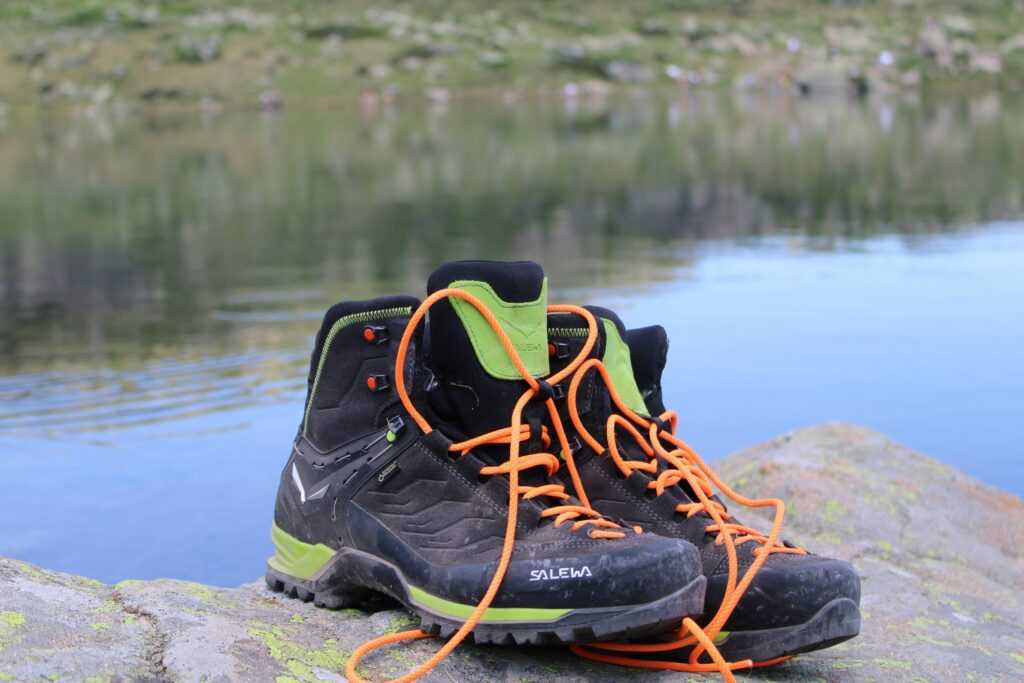Know Your Terrain First
Not all trails are created equal, and your boots shouldn’t be either. Before grabbing a pair off the shelf, you need to understand where you’re actually going. Terrain drives everything: from ankle support to outsole traction to how breathable (or bombproof) your materials need to be.
Start by classifying the trail:
Flat or hardpack: Think groomed paths, park trails, and wide gravel roads. Lightweight, flexible shoes are usually fine here don’t overdo the bulk.
Rocky or mountainous: Expect uneven footing, sharp surfaces, and elevation changes. You’ll want mid to high cut boots, sturdy soles, and plenty of toe protection.
Muddy or forested: These trails soak up water and hide roots and slick slopes. High traction lug patterns and waterproof membranes become essential.
Snow or alpine: This is no place for compromise. Heavy insulation, full support, and compatibility with traction devices like crampons are mandatory.
Terrain affects every choice. Low cut hikers aren’t built for scree fields. Waterproofing won’t matter if your soles can’t grip a mossy incline. Wrong gear on the wrong trail just means pain, slowed pace, and probably a trip you won’t repeat. So classify first buy second.
Light Trails: Stay Flexible
If you’re hitting well marked, packed dirt paths or knocking out short hikes, there’s no need to overgear. Save the stiff boots for tougher terrain. What you want here is something lightweight and agile think low cut hiking shoes or flexible mid cut boots that give just enough support without locking you down.
Prioritize breathable materials that keep your feet cool and dry. On these easier trails, heavy insulation and thick leather are overkill. Instead, go for mesh panels and lighter soles that let you move fast and stay nimble. This is also where comfort takes the front seat your goals are mobility and preventing blisters, not powering through scree fields.
Bottom line: if your trail is easy, your boot should be too.
Rocky and Mountain Conditions

Rugged terrain isn’t the place for minimal gear. When you’re scrambling over loose rock, steep inclines, or jagged ridgelines, your boots need to work as hard as you do. This is where structure comes in. Mid to high cut boots provide crucial ankle support, cutting down the odds of a rolled ankle on unstable ground. They also help with balance when carrying a heavier pack.
Deep lug outsoles give you grip when the footing turns unpredictable. Opt for stiffer midsoles they add support on uneven surfaces and reduce foot fatigue over long distances. Reinforced toe caps and durable uppers matter too; they’ll protect your feet from sudden knocks against rocks and roots. Bonus if they’re abrasion resistant.
Lastly, don’t underestimate water resistance. Streams, sudden storms, or snowmelt can turn a solid trail into a slick mess fast. A boot that handles moisture and holds traction on wet rock? Non negotiable.
Wet, Muddy, or Forest Terrain
If your trail involves water crossings, slick roots, or sloshy ground, your boots need to hold their own. Waterproof membranes think Gore Tex or equivalents aren’t optional here. They create a barrier that keeps outside moisture from soaking your socks while still letting sweat escape. Wet feet are a fast track to blisters, cold, and general misery.
Underfoot, go for mud shedding tread patterns. You want wide spaced lugs that don’t clog up with debris, giving you steadier footing in slop. High cut boots come into play too: they support your ankles and offer better protection from unpredictable terrain and hidden slips.
Inside the boot, moisture wicking insoles are worth the upgrade. They help manage the damp from within, keeping your feet warmer and drier over long distances. This combo sealed on the outside, managed on the inside is the difference between pushing forward and pulling out early.
Snow and Alpine Conditions
When you’re dealing with snowfields, ice, or high altitude terrain, regular hiking boots don’t cut it. You need true winter boots or full on mountaineering footwear gear that’s made to survive long exposure in harsh, frozen environments.
Insulation becomes non negotiable. Look for boots rated for sub zero temps, with layers that trap heat even when you’re standing still. Outsoles need to grip across ice and powder alike, so deep lugs and aggressive traction patterns are a must. For high angle or technical climbs, crampon compatibility matters check the boot’s rigidity and sole design.
Durability goes hand in hand with all that. Expect reinforced uppers, burly rubber rands, and materials that won’t break down after a few freeze thaw cycles. Breathability, on the other hand, takes a backseat here. These boots are less about airflow and more about locking warmth in and weather out. If your feet sweat, moisture wicking socks can help.
Bottom line? When hiking above the snowline, don’t wing it. Invest in boots that are built for the extremes they’ll keep you moving when everything else wants to shut down.
Fit is Non Negotiable
Don’t leave fit to guesswork. Always test boots with the socks you’ll actually hike in thickness matters. Trail socks add bulk, and if you skip that step in the store, expect surprises later.
Make sure there’s a thumb’s width of space in the toe box. Long hikes make feet swell, and cramped toes mean bruising or worse. Your foot should feel secure, but not caged.
Most importantly: zero heel slippage. If your heel lifts with each step, you’re asking for blisters and shaky footing. If the boot doesn’t hold your heel in place, it’s not the right boot. Swap it out. Comfort and lock in aren’t up for debate when the terrain gets serious.
Break them in properly never head out with fresh boots. That’s a rookie move that could cost you miles of blisters. Break them in over a few short walks or training hikes. Let your feet and the boots get to know each other before committing to any serious trail.
Trails change with the seasons. Snowmelt turns hardpack into mud. Dry summer paths can crack and shift. A boot that worked great in October might slide all over in April. Keep an eye on the forecast and know what your route looks like right now not just the last time you hiked it.
Top tier boot selection doesn’t just mean grabbing whatever’s on sale. It’s intentional. Functional. Unforgiving if you get it wrong. Want to dive deeper? This no fluff hiking boots guide breaks it down by terrain type.
Your feet are doing the heavy lifting. Respect them. Plan accordingly.
Explore the full hiking boots guide for terrain specific picks.


 Dominic Reed brings his extensive experience in outdoor survival and adventure sports to Terra Tactician Tactics, where he plays a crucial role in the platform's development. With a background in outdoor education and a deep love for wilderness exploration, Dominic is committed to creating content that inspires and informs readers. He specializes in writing articles on survival skills, advanced camping techniques, and gear recommendations, drawing from his own adventures and hands-on expertise. Dominic's practical approach and engaging storytelling help readers prepare for their outdoor pursuits, ensuring they are well-equipped for whatever nature throws their way.
In addition to his writing, Dominic actively collaborates with the team to expand the platform's reach and impact. He is passionate about connecting with the outdoor community and sharing his knowledge with those eager to learn more about survival tactics and adventure sports. His contributions have been instrumental in positioning Terra Tactician Tactics as a go-to resource for enthusiasts seeking to elevate their outdoor experiences. Dominic's dedication to the project is driven by his belief in the transformative power of nature and his desire to help others develop a deeper connection to the wild.
Dominic Reed brings his extensive experience in outdoor survival and adventure sports to Terra Tactician Tactics, where he plays a crucial role in the platform's development. With a background in outdoor education and a deep love for wilderness exploration, Dominic is committed to creating content that inspires and informs readers. He specializes in writing articles on survival skills, advanced camping techniques, and gear recommendations, drawing from his own adventures and hands-on expertise. Dominic's practical approach and engaging storytelling help readers prepare for their outdoor pursuits, ensuring they are well-equipped for whatever nature throws their way.
In addition to his writing, Dominic actively collaborates with the team to expand the platform's reach and impact. He is passionate about connecting with the outdoor community and sharing his knowledge with those eager to learn more about survival tactics and adventure sports. His contributions have been instrumental in positioning Terra Tactician Tactics as a go-to resource for enthusiasts seeking to elevate their outdoor experiences. Dominic's dedication to the project is driven by his belief in the transformative power of nature and his desire to help others develop a deeper connection to the wild.